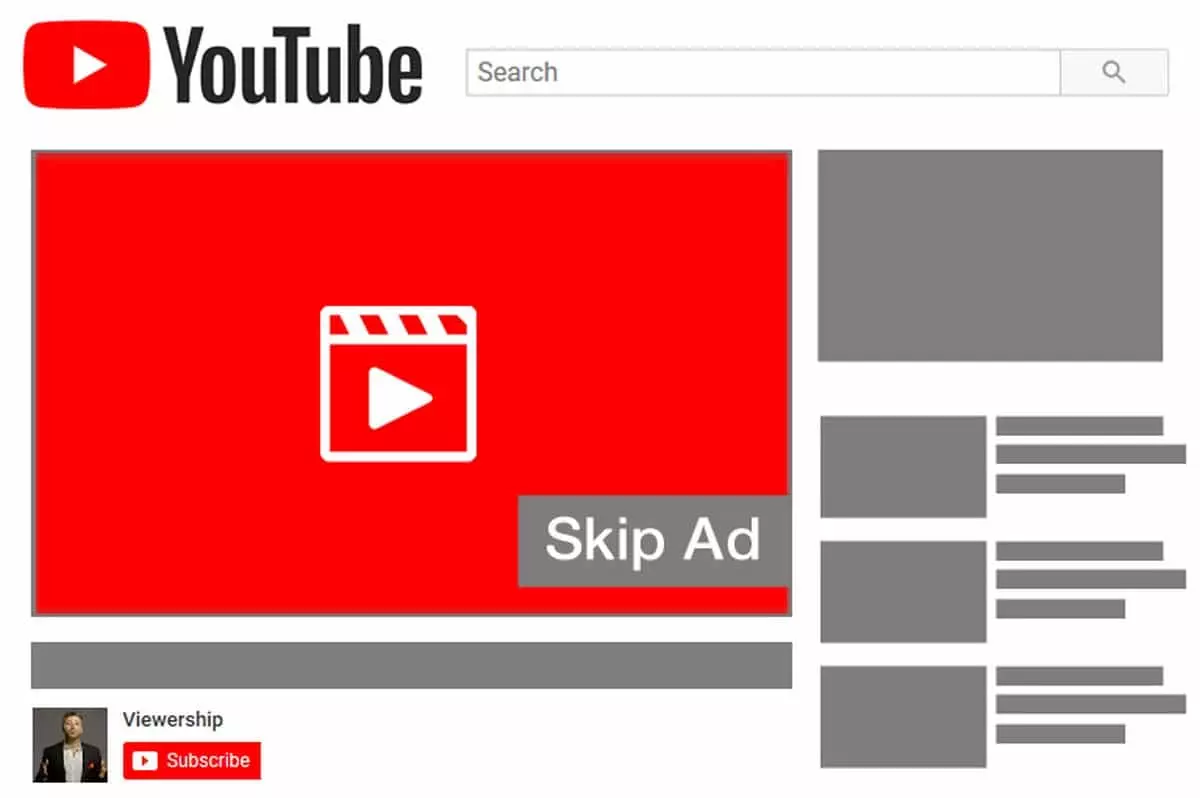Table of Contents
Mastering YouTube Ad Targeting: Your Ultimate Guide
Targeting the right audience is the cornerstone of a successful YouTube ad campaign. With YouTube’s extensive targeting options, advertisers can pinpoint specific groups based on demographics, interests, behaviors, and more. This precision ensures your ads reach users who are most likely to engage with and act on your message, leading to higher ROI and better campaign outcomes.
In this comprehensive guide, we’ll break down YouTube’s targeting options, explore how to use each effectively, and provide strategies for layering targeting techniques to refine your audience. By the end, you’ll have a robust toolkit to optimize your campaigns and reach your ideal audience.
1. Understanding YouTube’s Targeting Options
YouTube offers a variety of targeting options that cater to diverse marketing needs. These options allow advertisers to connect with audiences based on their characteristics, interests, and behaviors. Understanding these tools is the first step in crafting a campaign that resonates with the right viewers.
Key Targeting Categories
- Demographic Targeting: Focuses on basic characteristics such as age, gender, parental status, and location.
- Interest Targeting: Reaches users based on their hobbies, preferences, and favorite activities.
- Behavior Targeting: Targets audiences based on their online and offline behaviors, including purchasing patterns and travel habits.
- Custom Audiences: Connects with users who have previously interacted with your brand through website visits, app usage, or email lists.
- Lookalike Audiences: Expands your reach by targeting users with characteristics similar to your existing customers.
Each option has its strengths and use cases, and combining them can create even more precise targeting.
2. Demographic Targeting
Demographic targeting is one of the most straightforward and widely used options on YouTube. It allows advertisers to tailor their ads to specific age groups, genders, parental statuses, and geographic regions.
Why Demographic Targeting Matters
Different demographics have unique preferences, behaviors, and purchasing power. By narrowing your audience based on these factors, you can craft ads that speak directly to their needs and interests. For example, a skincare brand targeting young adults may focus on users aged 18-24, while a luxury travel agency might prioritize high-income users over 35.
How to Use Demographic Targeting Effectively
- Refine by Location: Target users in specific countries, states, or cities to localize your messaging. For instance, a local restaurant could run ads exclusively in their city.
- Consider Life Stages: If you’re selling baby products, focus on new parents by targeting users with parental status enabled.
- Customize Content for Each Group: Adjust your ad creatives to resonate with different demographics. For example, ads targeting teenagers should use language and visuals that appeal to their age group.
3. Interest Targeting
Interest targeting is a powerful way to connect with users based on their hobbies, preferences, and passions. YouTube gathers data on users’ viewing habits, subscriptions, and ad interactions to create detailed interest profiles.
Why Interest Targeting Works
People are more likely to engage with ads that align with their existing interests. By tapping into these preferences, you can increase the relevance of your ads and boost engagement. For example, a fitness equipment brand might target users who frequently watch workout tutorials or follow fitness channels.
How to Use Interest Targeting Effectively
- Focus on Niche Interests: If your product caters to a specific audience, use granular interest categories to reach them. For instance, a niche travel service might target users interested in “adventure travel” rather than the broader “travel” category.
- Combine Interests: Target users who exhibit multiple related interests. For example, a music streaming service could target users interested in both “live concerts” and “musical instruments.”
- Refresh Targeting Regularly: Interests evolve over time, so update your targeting periodically to ensure it remains relevant.
4. Behavior Targeting
Behavior targeting takes targeting a step further by focusing on users’ actions both on and off YouTube. This includes purchasing behavior, device usage, and even travel habits.
Why Behavior Targeting is Valuable
Behavior targeting allows you to reach users based on real-world actions, such as recent purchases or website visits. This data-driven approach ensures your ads align with the user’s current needs and interests.
How to Use Behavior Targeting Effectively
- Target Recent Purchases: If you’re selling accessories, target users who recently bought related items, like smartphones or tablets.
- Use Device Insights: Advertise mobile apps to users on smartphones or promote high-resolution displays to those using desktops.
- Leverage Travel Behaviors: A travel agency could target users who frequently search for flights, browse hotel websites, or watch destination reviews.
Example: A luggage brand could create ads targeting users who recently visited travel booking websites, showcasing features like durability and compact storage.
5. Custom Audiences
Custom audiences allow advertisers to target users who have already interacted with their brand. This group includes website visitors, app users, and email subscribers, making it an excellent choice for personalized and retargeting campaigns.
Why Custom Audiences Are Powerful
Custom audiences consist of users who are already familiar with your brand, making them more likely to convert. These audiences are also perfect for running remarketing campaigns, as they often require fewer touchpoints to take action.
How to Use Custom Audiences Effectively
- Segment Your Audiences: Divide your audience based on their interactions. For example, separate website visitors who viewed specific products from those who abandoned their shopping cart.
- Personalize Your Messaging: Tailor your ads to reflect the user’s previous engagement. For instance, an e-commerce store might show ads highlighting a discount on items left in the cart.
- Use Time-Based Targeting: Target users who interacted recently for higher conversion rates. Adjust your approach for older interactions by introducing fresh offers or content.
6. Lookalike Audiences
Lookalike audiences, also known as similar audiences on YouTube, allow you to expand your reach by targeting users who share characteristics with your existing customers. YouTube analyzes your custom audience data to identify these lookalikes, ensuring they’re likely to be interested in your brand.
Why Lookalike Audiences Work
Lookalike audiences help advertisers scale their campaigns without losing relevance. By targeting users similar to your most valuable customers, you can grow your audience with minimal guesswork.
How to Use Lookalike Audiences Effectively
- Define Your Source Audience: The quality of your lookalike audience depends on your source data. Use well-segmented custom audiences with high engagement rates to build strong lookalike profiles.
- Adjust the Size: Smaller lookalike audiences are more precise, while larger ones offer broader reach. Test different sizes to find the right balance for your campaign goals.
- Test Different Offers: Since lookalike audiences are new to your brand, start with ads that highlight your unique value proposition or offer introductory deals.
7. Layering Targeting Options
For the most refined targeting, consider layering multiple options, such as demographics, interests, and behaviors. This approach narrows your audience further, ensuring your ads are seen by the users most likely to engage and convert.
Why Layering is Effective
Layering combines the strengths of various targeting methods to create a highly focused audience. This increases the relevance of your ads, improves engagement, and reduces wasted impressions.
How to Use Layered Targeting Effectively
- Combine Demographics with Interests: For example, target women aged 25-35 who are interested in sustainable fashion.
- Add Behavior Data: Layer in behaviors like recent purchases or website visits to further refine your audience.
- Test and Refine: Monitor the performance of your layered audience and adjust parameters as needed to improve results.
8. Testing and Iteration
Targeting is not a one-and-done process. Successful campaigns require continuous testing and iteration to refine your audience and improve results.
How to Test Targeting Options:
- Run Small Campaigns: Test individual targeting options or combinations with smaller budgets to gauge performance.
- Analyze Metrics: Use YouTube Analytics to monitor CTR, conversion rates, and engagement levels for each targeted group.
- Optimize for Performance: Adjust targeting criteria based on the insights gained. For example, if a specific interest group underperforms, refine or replace it with a new category.
Conclusion
Mastering YouTube ad targeting is essential for creating effective campaigns that resonate with your audience and drive results. By leveraging YouTube’s robust targeting options—including demographics, interests, behaviors, custom audiences, and lookalike audiences—you can craft highly targeted ads that reach the right users at the right time.
Layering targeting options and continuously testing your strategies ensures your ads remain relevant and impactful. With the right approach, you can maximize your campaign’s effectiveness, increase engagement, and achieve your marketing goals on YouTube.
Frequently Asked Questions
Social Blaze provides a comprehensive suite of features including social media scheduling, analytics, content libraries, team collaboration tools, RSS feed automation, and a browser extension to streamline your social media strategy.
Absolutely! Social Blaze is designed to cater to both small businesses and larger agencies, offering customizable solutions to fit various needs, whether you’re managing a single account or multiple clients.
Our AI assistant takes the hassle out of content creation by creating AI post content for you, think of it as your social media sidekick, saving you time while helping you level up your strategy with smart insights.
Yes! Social Blaze offers various integrations with popular platforms and tools, allowing you to streamline your workflow and enhance your social media management experience seamlessly.





